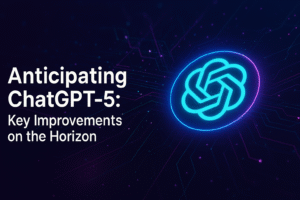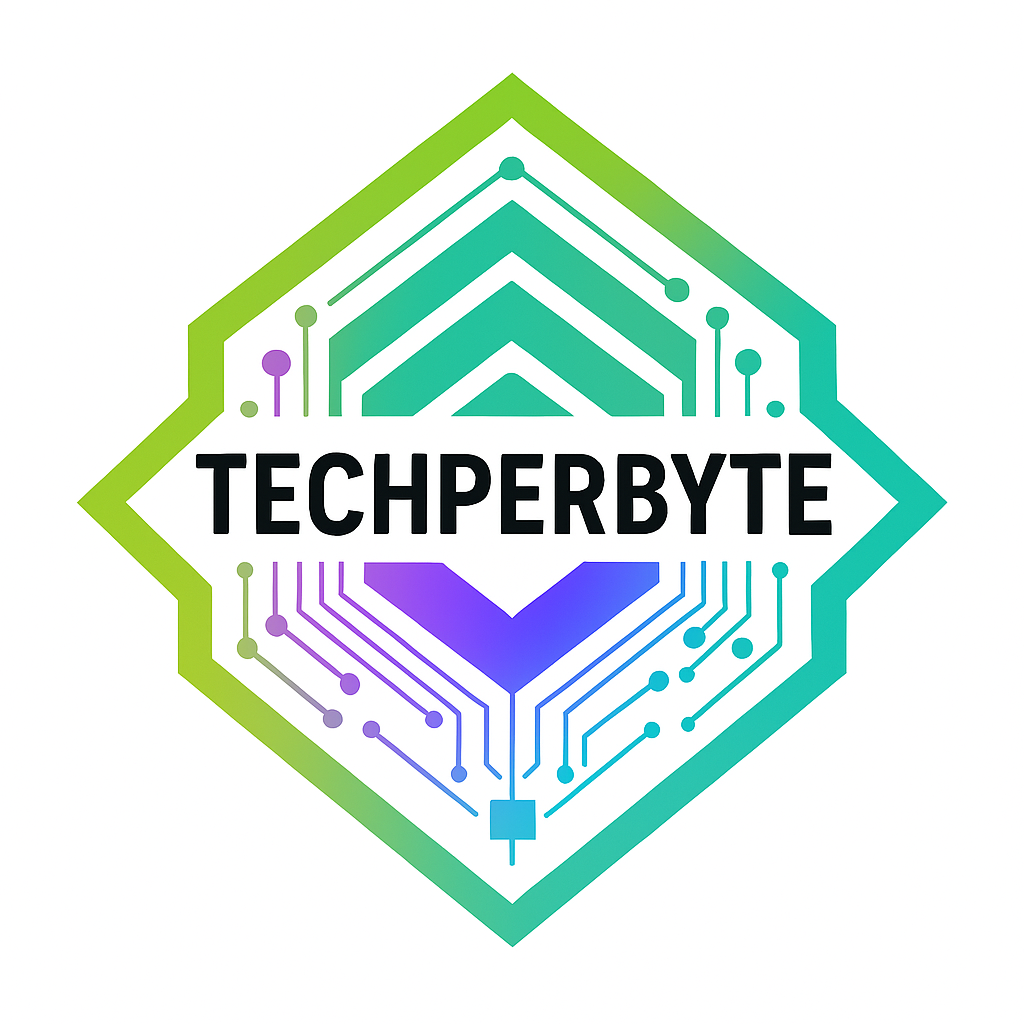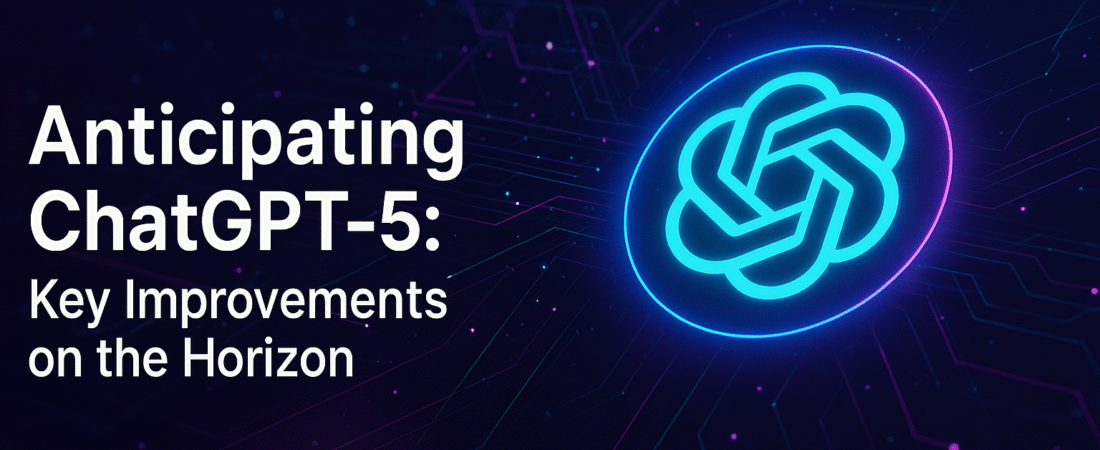Introduction to ChatGPT-5
The evolution of AI language models continues to captivate the technology sector and its users alike. Among the most anticipated advancements is ChatGPT-5, a forthcoming iteration that promises to enhance the capabilities of its predecessors. Expected to be released in the near future, ChatGPT-5 aims to redefine user interactions with artificial intelligence. This evolution represents not only a significant leap in technology but also a paradigm shift in how individuals and businesses utilize conversational agents.
The advancements associated with ChatGPT-5 are expected to address various limitations found in earlier versions. Improvements in comprehension, contextual understanding, and response generation are among the key features anticipated in this version. By refining these aspects, ChatGPT-5 endeavors to provide more human-like interactions, creating a seamless experience for users that can cater to a wide array of needs, from casual conversations to intricate problem-solving tasks. This potential new release is particularly significant as it seeks to enhance not just engagement, but also the reliability and accuracy of information provided by AI chat models.
This blog post aims to explore the expected improvements and features of ChatGPT-5, emphasizing its potential impact on user experiences across diverse platforms. By examining the implications of these advancements, we can begin to understand the transformative role that AI is set to play in communication, education, and various industries. As we delve deeper into the specific enhancements touted for ChatGPT-5, it becomes evident that it is not merely a technological upgrade; it is a key step towards a future where artificial intelligence becomes an integral aspect of daily life and decision-making processes.

Enhanced Context Understanding
The evolution of AI language models has continuously aimed at enhancing context understanding, and ChatGPT-5 is anticipated to set a new benchmark in this realm. One of the significant advancements expected is the model’s ability to retain information from longer conversations more effectively. Current iterations sometimes struggle with continuity; however, ChatGPT-5 plans to leverage improved memory mechanisms that allow it to remember key points and nuances from discussions that span multiple exchanges. This is crucial when conversations involve complex topics or if users refer back to previous mentions, as it enables a more cohesive interaction experience.
Furthermore, minimizing contextual errors is a top priority for developers of ChatGPT-5. In earlier versions, misunderstandings sometimes occurred due to vague or incomplete contextual grasp. With enhanced algorithms, the upcoming model is likely to achieve a sharper focus on user intent. For instance, if a user poses a question with multiple interpretations, an advanced model would be more adept at discerning which path to take based on prior dialogue, rather than defaulting to the most common interpretation.
Handling intricate dialogues is another area poised for improvement. ChatGPT-5 is expected to excel in situations where layered inquiries or follow-up questions arise. Consider a scenario where a user initiates a discussion about a medical condition, later pivoting to an entirely different subject, such as treatment options. The improved context navigation will allow the model to seamlessly manage these transitions without losing sight of the primary topic or the user’s concerns. Such advancements signify a step toward achieving a more human-like interaction with AI, fostering richer and more meaningful exchanges.
Increased Memory for Conversations
One of the most anticipated improvements in ChatGPT-5 is its enhanced memory capabilities, which will significantly affect how users interact with the model. This advanced memory system seeks to enable ChatGPT-5 to retain more detailed and contextually relevant information from prior conversations. Unlike earlier versions, where the memory was somewhat limited and fleeting, the upgraded model aims to create a coherent dialogue that builds upon previous exchanges, enhancing continuity and user engagement.
The potential implications of this increased memory are vast. With the ability to remember details such as user preferences, past queries, and ongoing discussions, ChatGPT-5 becomes more than just a transient assistant; it evolves into a personalized interaction partner. For instance, if a user frequently asks about specific topics or expresses particular interests, the model will be able to recall these preferences in future conversations. This personalized touch aims to make interactions feel less robotic and more intuitive, fostering an ongoing relationship between the user and the AI.
Moreover, this improvement in memory could elevate the usefulness of ChatGPT-5 in various applications, from customer support to educational tools. Users may find themselves engaged in deeper dialogues, as the model recalls conversations and builds upon them in ways that are more reflective of human communication patterns. This aspect not only creates a more engaging experience but also increases the practicality of the tool across different contexts, encouraging repeat use and trust in the model.
Essentially, the enhanced memory capabilities of ChatGPT-5 stand to revolutionize user interactions, establishing a smarter and more responsive AI framework that prioritizes continuity and meaningful engagement.
Deeper Personalization Features
As artificial intelligence continues to evolve, one of the most significant anticipated advancements in ChatGPT-5 is the introduction of deeper personalization features. These enhancements aim to allow users to customize their interaction experiences more effectively, tailoring the AI’s response styles, tones, and levels of detail according to their specific preferences. This level of personalization is not merely a convenience; it represents a fundamental shift in how users can interact with AI, making engagements more intuitive and relevant.
In previous versions, while users had some control over how the AI responded, the upcoming ChatGPT-5 promises to offer much more flexibility. This includes the ability for users to specify various parameters, such as choosing a formal or casual tone, adjusting the complexity of the language used, and even expressing preferences for specific kinds of information. Through intuitive interfaces, users could easily make adjustments to suit their current needs, whether for professional communication or casual conversation.
Moreover, an essential aspect of these personalization features is the integration of user-specific data, which can enhance the quality and relevance of interactions. By utilizing user history and context, ChatGPT-5 could present recommendations or suggestions uniquely tailored to an individual’s past preferences and inquiries. However, this raises important considerations regarding privacy and data security. The anticipated advancements will involve stringent measures to ensure that any integration of personal data is handled with the utmost respect for user confidentiality. Users can expect to have transparent control over what information is collected and how it is utilized, ensuring a balanced approach that provides customization while protecting privacy.
In essence, the deeper personalization features of ChatGPT-5 signify exciting prospects for enhanced user experiences, emphasizing adaptability and user-centered design in AI interactions.
Bio Integration and User Recall
The advent of ChatGPT-5 is expected to bring a significant enhancement in its ability to integrate user profiles into its interactions, particularly through improved bio integration and user recall functionalities. This advancement will allow the model to access and utilize relevant personal data across different sessions seamlessly. As such, users can anticipate a more personalized experience during their interactions with the AI, as ChatGPT-5 will be able to reference previous conversations, preferences, and interests, thereby tailoring responses to better suit individual needs.
Effective bio integration serves to create a more interactive and engaging dialogue, as it fosters continuity in conversations. For instance, if a user frequently discusses a particular interest or project, ChatGPT-5 may remember these details and weave them into future responses. This not only enhances the relevance of the information provided but also creates a sense of familiarity, encouraging a deeper user engagement with the technology. However, the implementation of such capabilities raises vital questions concerning user privacy and data security.
To address these concerns, developers are likely to implement advanced privacy measures that ensure sensitive information is protected. Users will have the ability to manage their data visibility, allowing them to opt-in or opt-out of specific profiling features. This dual focus on personalization and privacy is paramount, as it seeks to create a user-friendly interface that respects individual rights while enhancing the overall interaction quality. As ChatGPT-5 develops these enhanced features, the balance between comfort and confidentiality will be crucial in promoting user trust and satisfaction.
Improved Accuracy and Reliability
The anticipation surrounding ChatGPT-5 largely stems from the expectation of significant improvements in the model’s accuracy and reliability. One of the foremost advancements in this upcoming iteration is expected to be its capacity to reduce misinterpretations and provide responses that are both contextually relevant and factually correct. As it stands, many users have experienced instances where ChatGPT may produce inaccurate or misleading information. The refinement in data processing algorithms is likely to address these issues, paving the way for a new standard in machine-generated content reliability.
One of the strategies proposed for enhancing accuracy involves leveraging a more extensive and diverse range of training data. By incorporating a broader spectrum of contexts and disciplines, ChatGPT-5 can attain a deeper understanding of various subject matters, thereby generating responses that are not only correct but also nuanced. This could reduce the prevalence of misinformation, which has been a significant concern for users and developers alike. Furthermore, the model’s ability to interpret user queries more effectively is expected to bolster its reliability. Enhanced parsing techniques will allow ChatGPT-5 to discern user intent more accurately, leading to more relevant and pinpointed answers.
Moreover, the integration of feedback loops and user interactions from its predecessors can play a crucial role in fine-tuning response mechanisms. By utilizing real-world examples and corrections provided by users, ChatGPT-5 can establish a feedback-rich environment where iterative learning occurs, thereby enhancing the overall accuracy of the model over time. By addressing these factors, ChatGPT-5 is poised to become a more dependable tool, facilitating users’ access to reliable information while maintaining a higher standard for factual integrity in its outputs. Ultimately, these improvements in accuracy and reliability will contribute significantly to restoring user trust and expanding the model’s applicability in various practical domains.
Handling Edge Cases More Effectively
The advancement from ChatGPT-4 to ChatGPT-5 is anticipated to bring significant improvements, particularly in handling edge cases and unusual queries. Edge cases are those rare situations that deviate from the norm and pose challenges in the response generation process. Addressing these scenarios effectively is crucial for enhancing user interaction and satisfaction. To achieve this, developers are incorporating various strategies aimed at refining the model’s understanding and responsiveness.
One of the primary approaches is the inclusion of more diverse training data. By broadening the dataset to include a wider range of unconventional queries and responses, ChatGPT-5 will become more adept at recognizing and responding appropriately to edge cases. This exhaustive exposure is expected to minimize instances where the model fails to provide useful information or produces irrelevant answers when faced with unique user situations.
Moreover, employing advanced contextual understanding mechanisms will allow ChatGPT-5 to grasp nuances and subtleties present in user inputs. This deeper comprehension is essential for distinguishing between standard and atypical queries, enabling the AI to generate more relevant and accurate responses. Techniques such as reinforcement learning from human feedback (RLHF) are likely to be further enhanced, allowing the model to learn how to deal with edge cases more effectively over time.
An emphasis on user feedback is also crucial. By actively soliciting input from users regarding their experiences with edge cases, developers can identify areas that require improvement and adjust the model’s parameters accordingly. This continuous feedback loop promotes a more adaptable AI, capable of evolving its capabilities in handling unusual queries.
In conclusion, the anticipated improvements in ChatGPT-5 not only facilitate better interactions but also significantly reduce user frustration through more effective handling of edge cases and unique queries.
User Feedback and Iterative Learning
User feedback plays a pivotal role in enhancing the functionality and performance of conversational models like ChatGPT-5. The iterative learning framework allows the system to absorb user interactions, analyze various types of feedback, and adapt its responses accordingly. This dynamic feedback loop is essential for improving the accuracy and relevance of the model’s outputs. By leveraging user insights, ChatGPT-5 can refine its understanding of language nuances, context, and preferences, ultimately leading to a more personalized experience.
One of the methodologies being considered involves systematic analysis of user interactions, where patterns and trends in feedback can be identified. For instance, users might indicate when a response is satisfactory or when a clarification is needed. This feedback can then be categorized into various types, such as constructive criticism or suggestions for improved phrasing. By gathering and evaluating this data, developers can devise strategies to implement changes that enhance user satisfaction.
Moreover, integrating feedback mechanisms directly within the interface may provide users with an opportunity to rate responses or flag inaccuracies in real-time. Such features will ensure that users are active participants in the iterative learning process. This not only fosters a sense of collaboration but also empowers users to contribute to the model’s evolution effectively. Each interaction could thus serve as a vital data point that informs future iterations of ChatGPT, enabling the system to learn from its existing knowledge base while adapting to new contexts and user needs.
Ultimately, embracing a feedback-driven development approach will significantly enrich the learning journey of ChatGPT-5. As the model continuously refines its responses and enhances its capabilities based on direct user feedback, the overall quality of interactions is expected to improve, leading to more meaningful and relevant conversational experiences.
Future Implications of ChatGPT-5 Advancements
The anticipated release of ChatGPT-5 brings with it a spectrum of advancements that promise to redefine interactions across multiple industries. As artificial intelligence continues to evolve, the demand for sophisticated conversational agents becomes increasingly evident. In sectors like customer service, businesses are likely to benefit from more intelligent, context-aware chatbots capable of handling complex queries with greater precision. This shift will enhance user experience by providing timely and relevant responses, ultimately fostering customer loyalty and satisfaction. Moreover, these advancements in AI-driven communication tools can lead to significant cost reductions associated with customer support operations.
In education, the implications of ChatGPT-5 could be transformative. With its potential for personalized learning experiences, educators may find new ways to engage students. By leveraging AI’s ability to analyze individual learning patterns, platforms can offer tailored content, fostering a deeper understanding of subjects and catering to varied learning styles. Furthermore, ChatGPT-5 could serve as a supplemental tutor, providing assistance outside traditional classroom settings, thereby bridging gaps in educational access and enhancing overall learning outcomes.
Content creation is another arena poised for disruption by the advancements in AI technology. Writers, marketers, and creators may leverage ChatGPT-5 to brainstorm ideas, draft content, and even analyze audience engagement, enhancing creativity and productivity. The potential for automated content generation could streamline workflows and open new avenues for innovative storytelling. Nevertheless, ethical considerations around originality and attribution will require careful management as AI-generated content becomes increasingly common.
In summary, the advancements introduced by ChatGPT-5 hold the potential to shape the future of various industries significantly. As AI becomes more integrated into daily life, the implications for user interaction, education, and content creation warrant thoughtful consideration and discussion among stakeholders. The trajectory of artificial intelligence suggests both opportunities and challenges, necessitating proactive engagement with these changes as they unfold.

